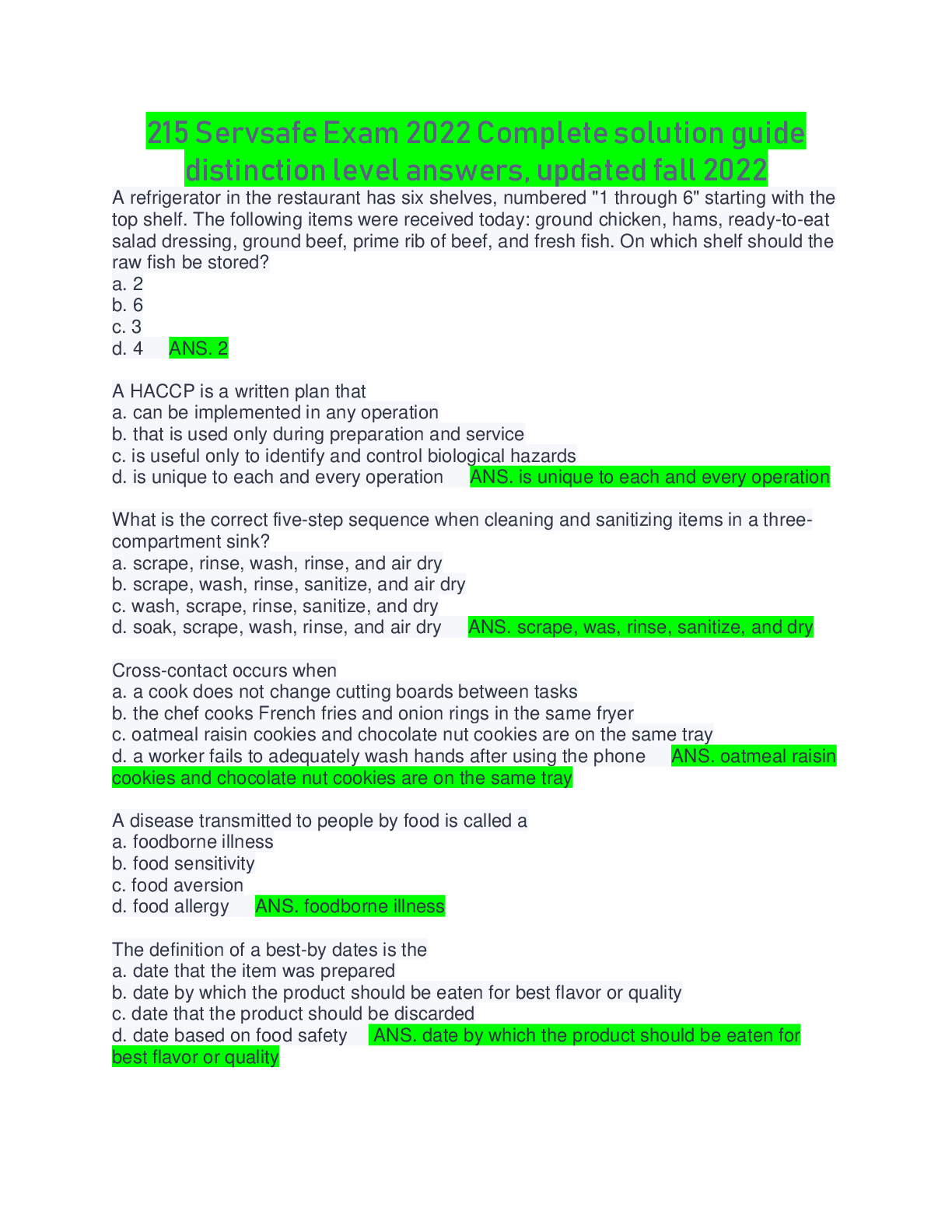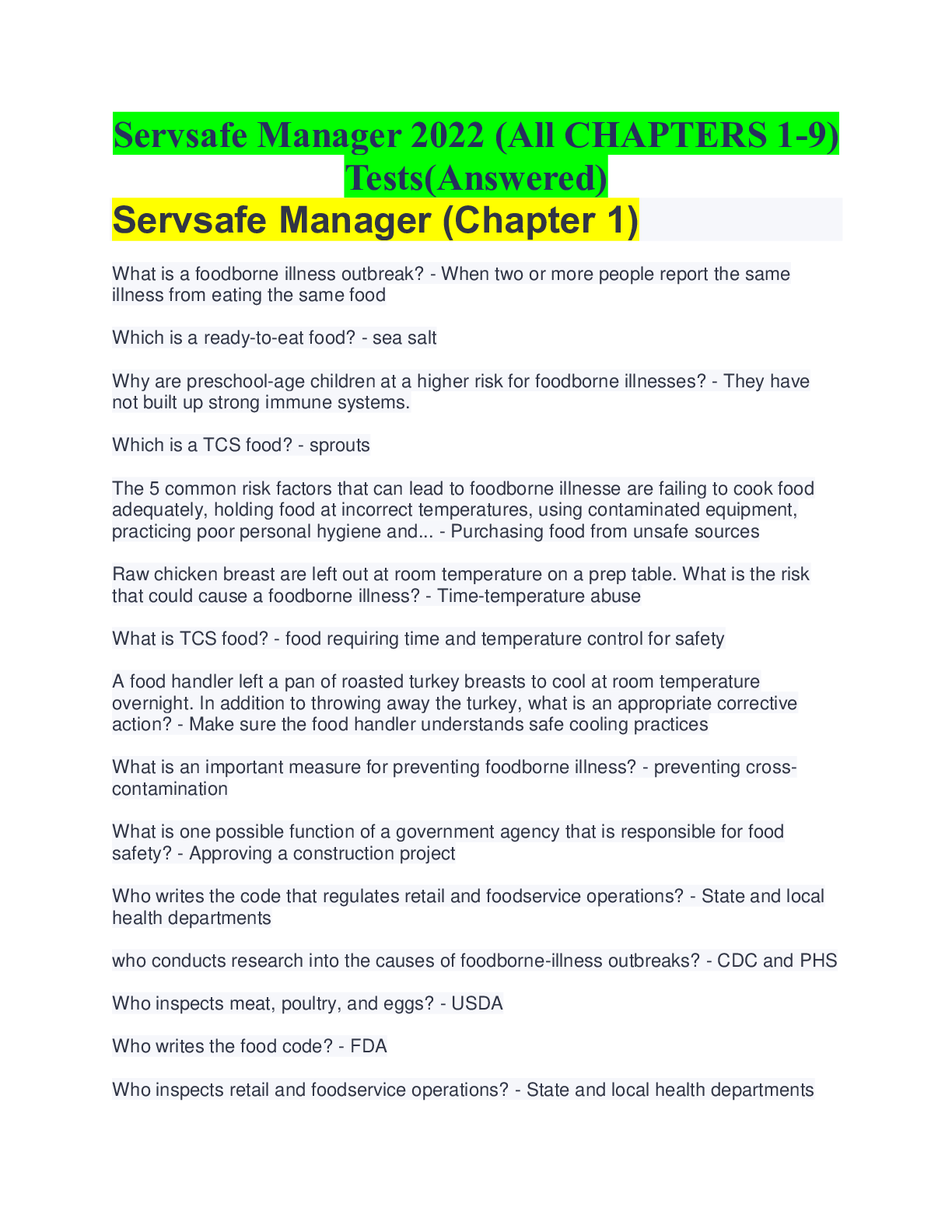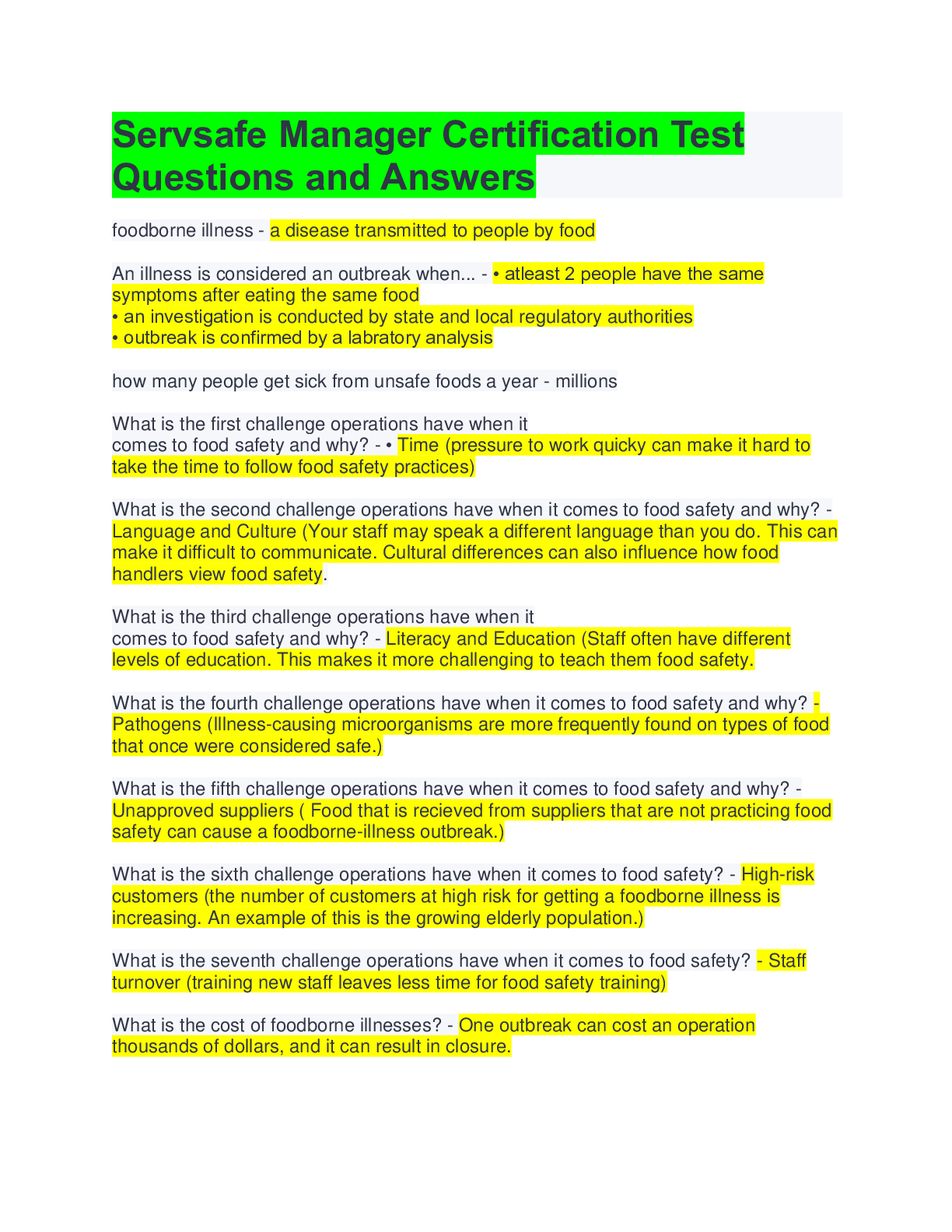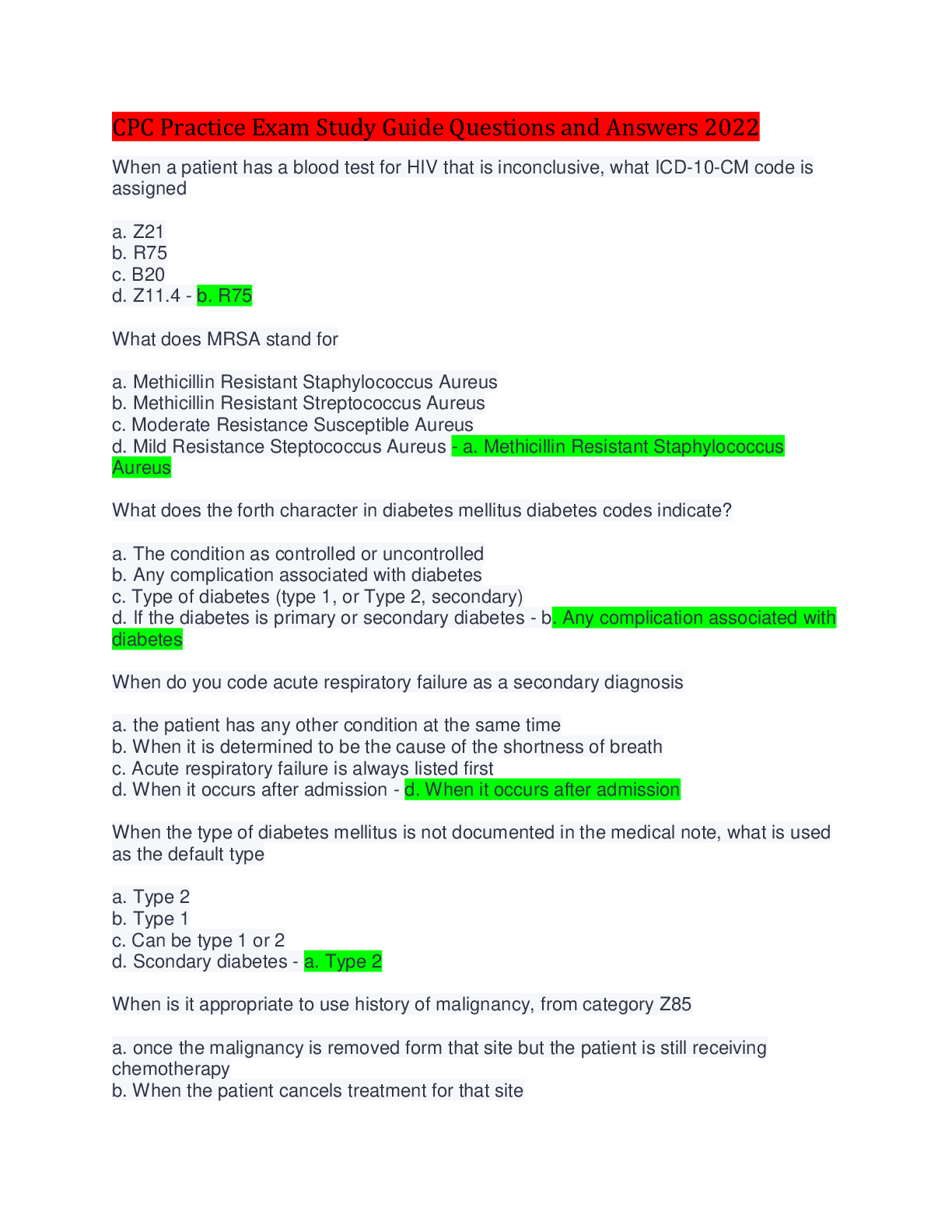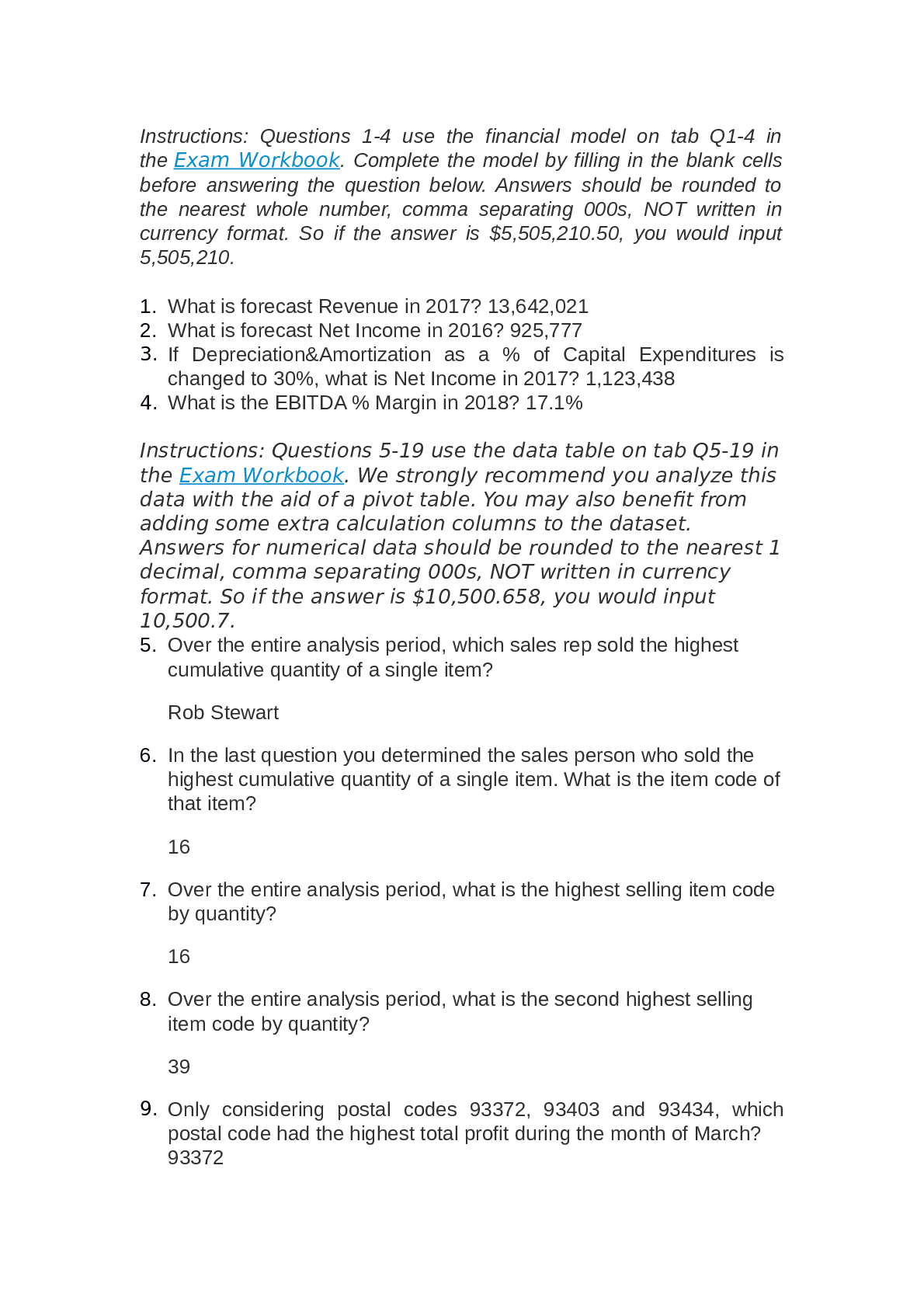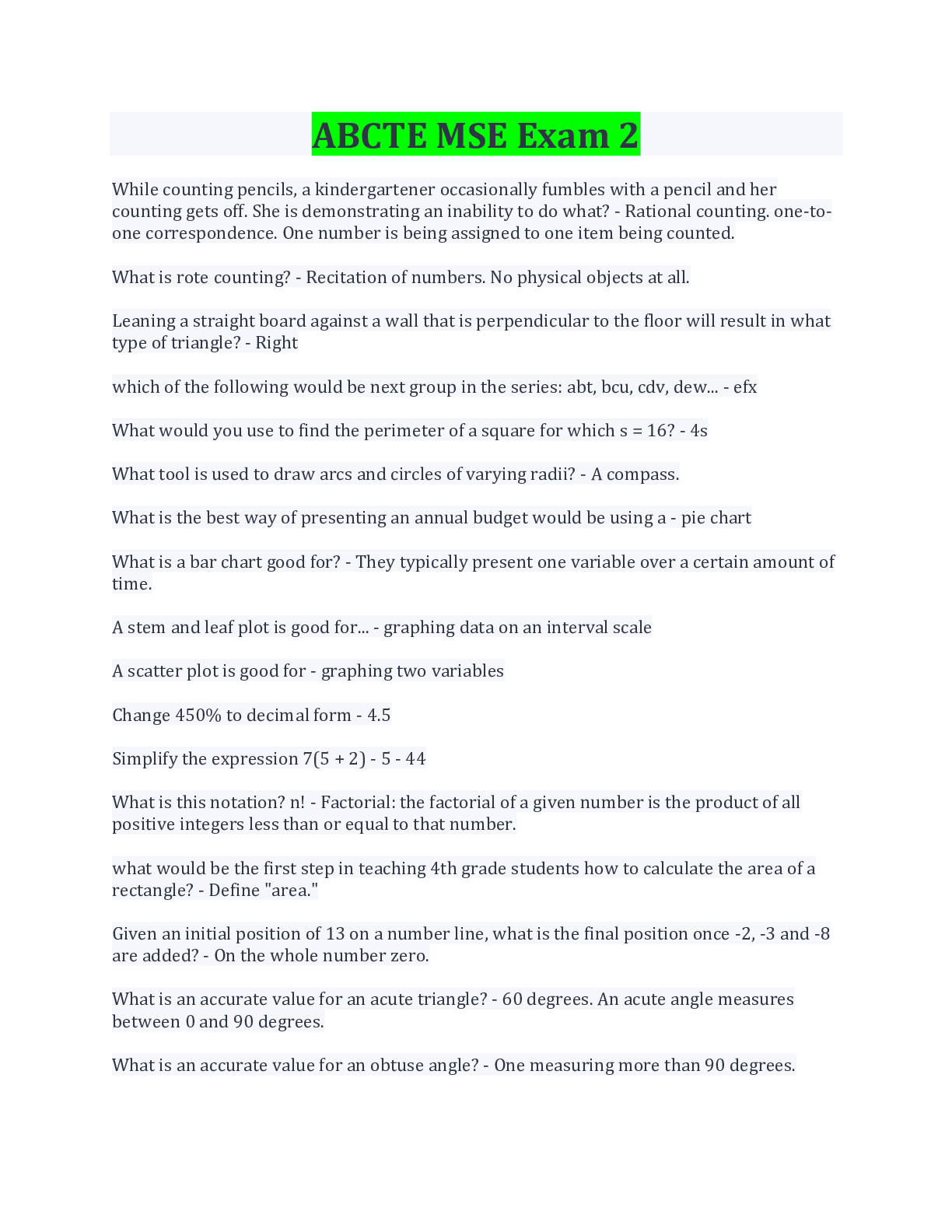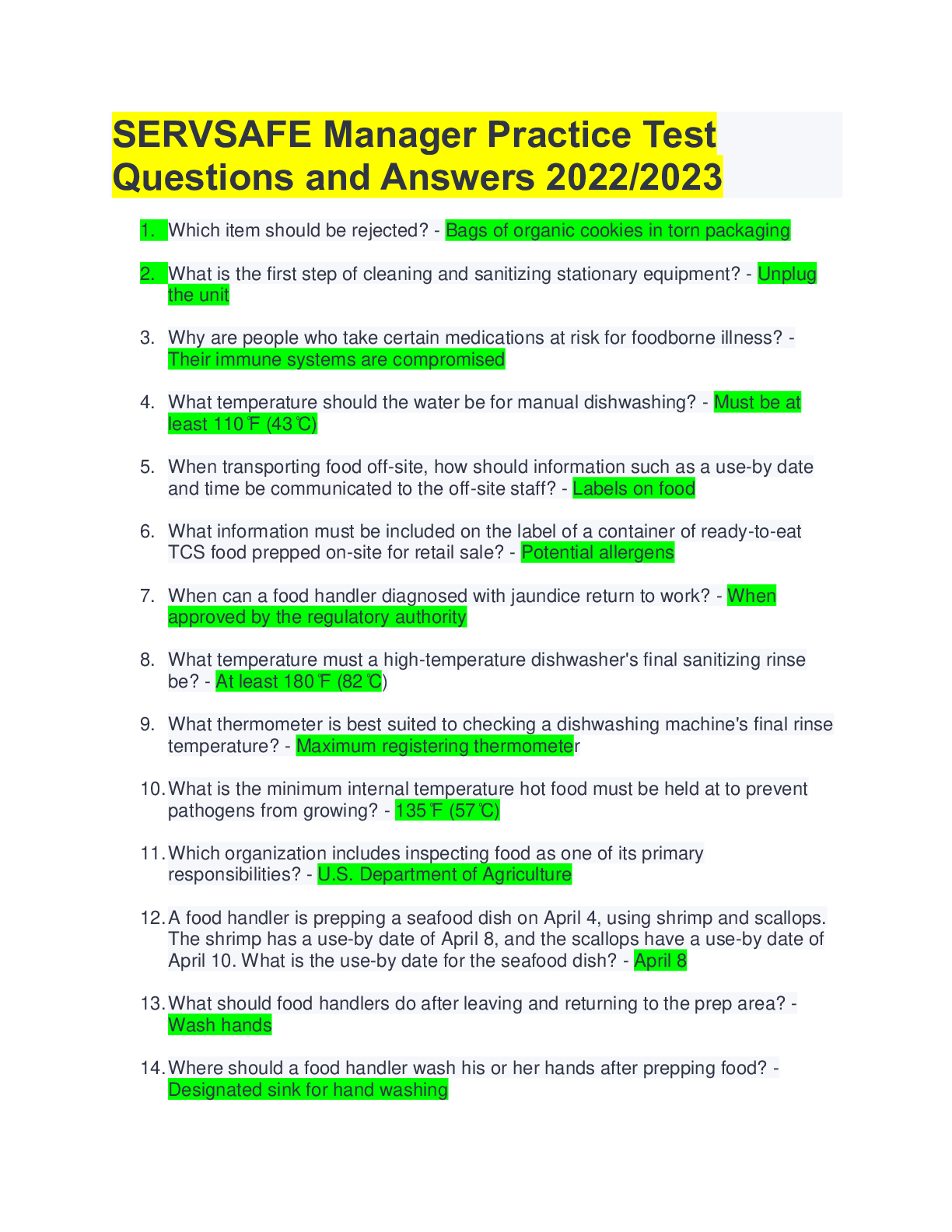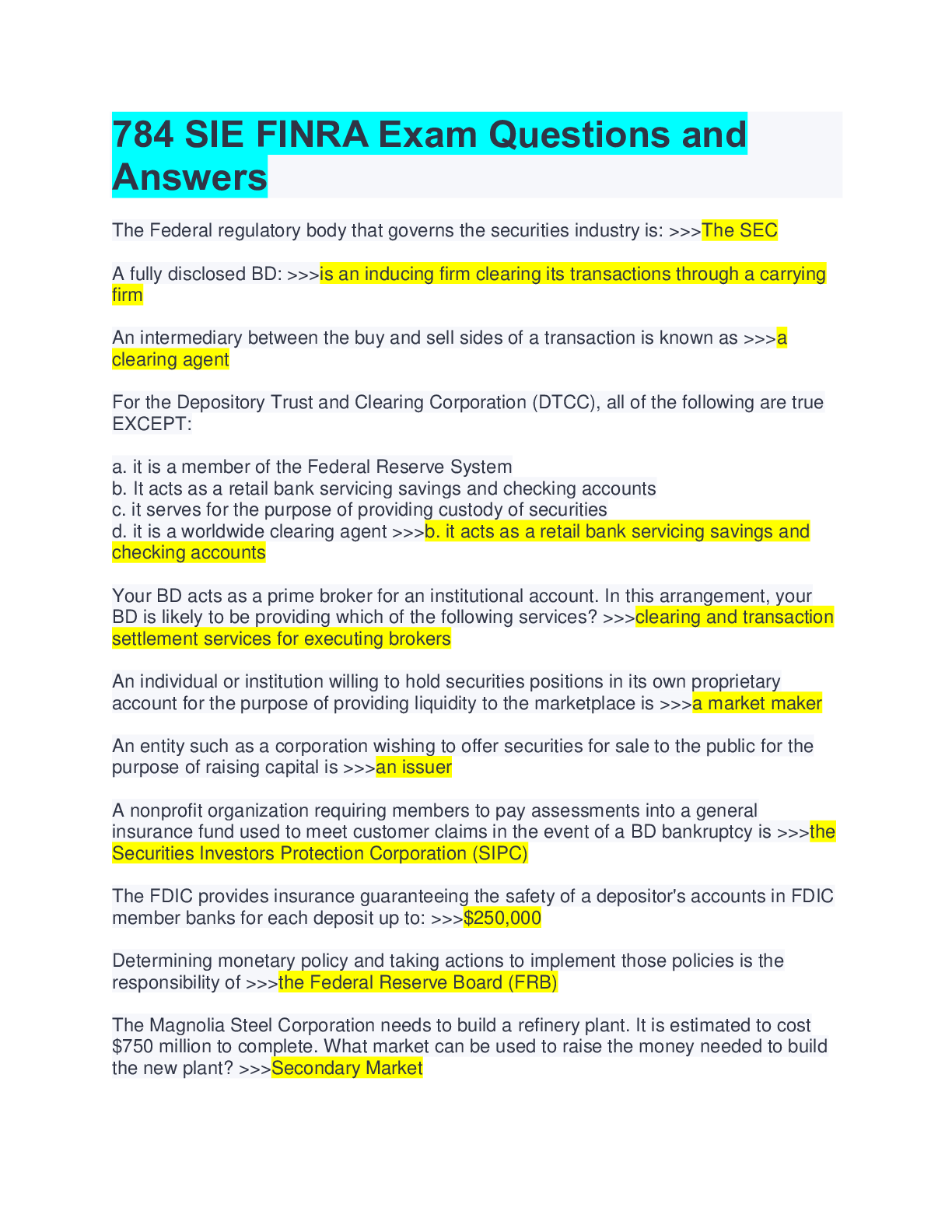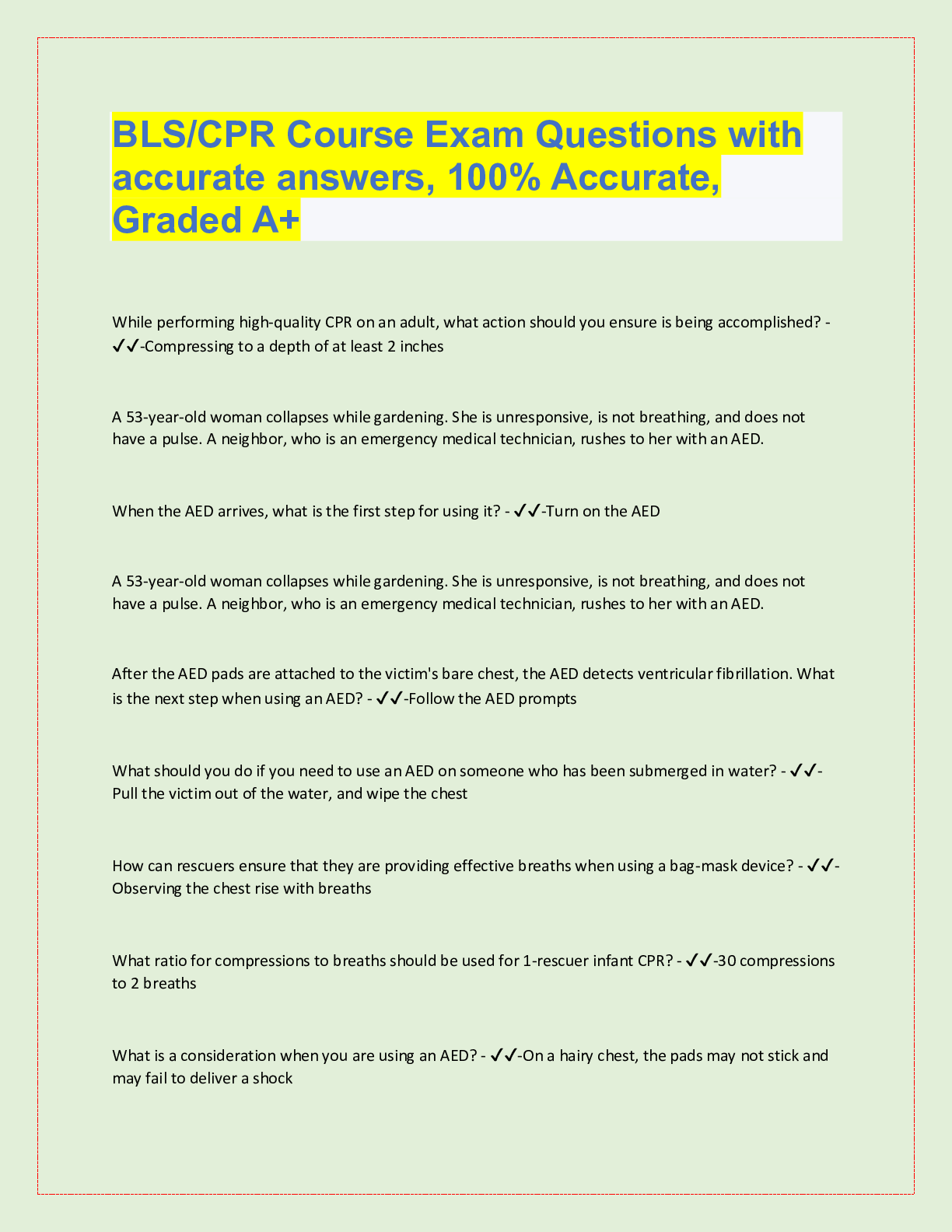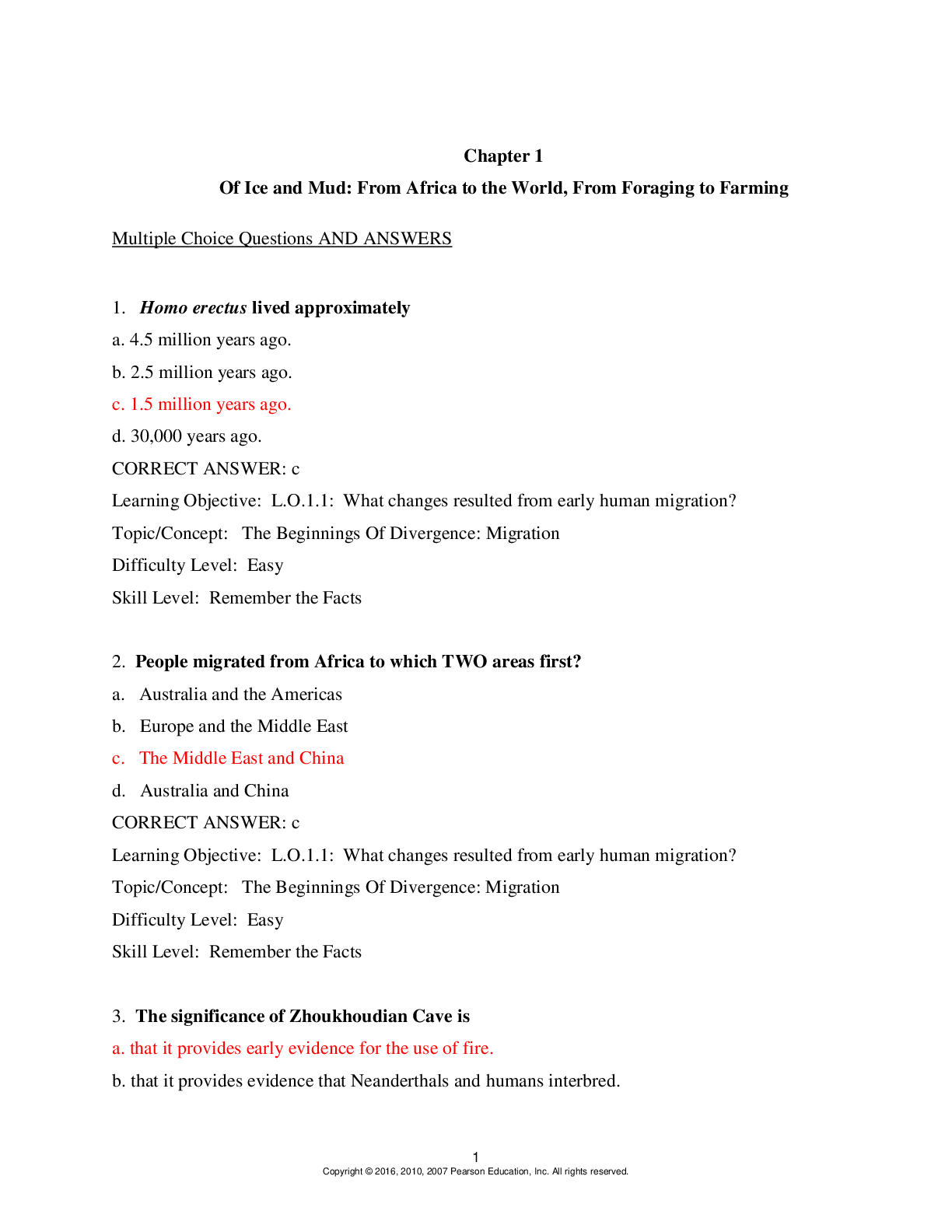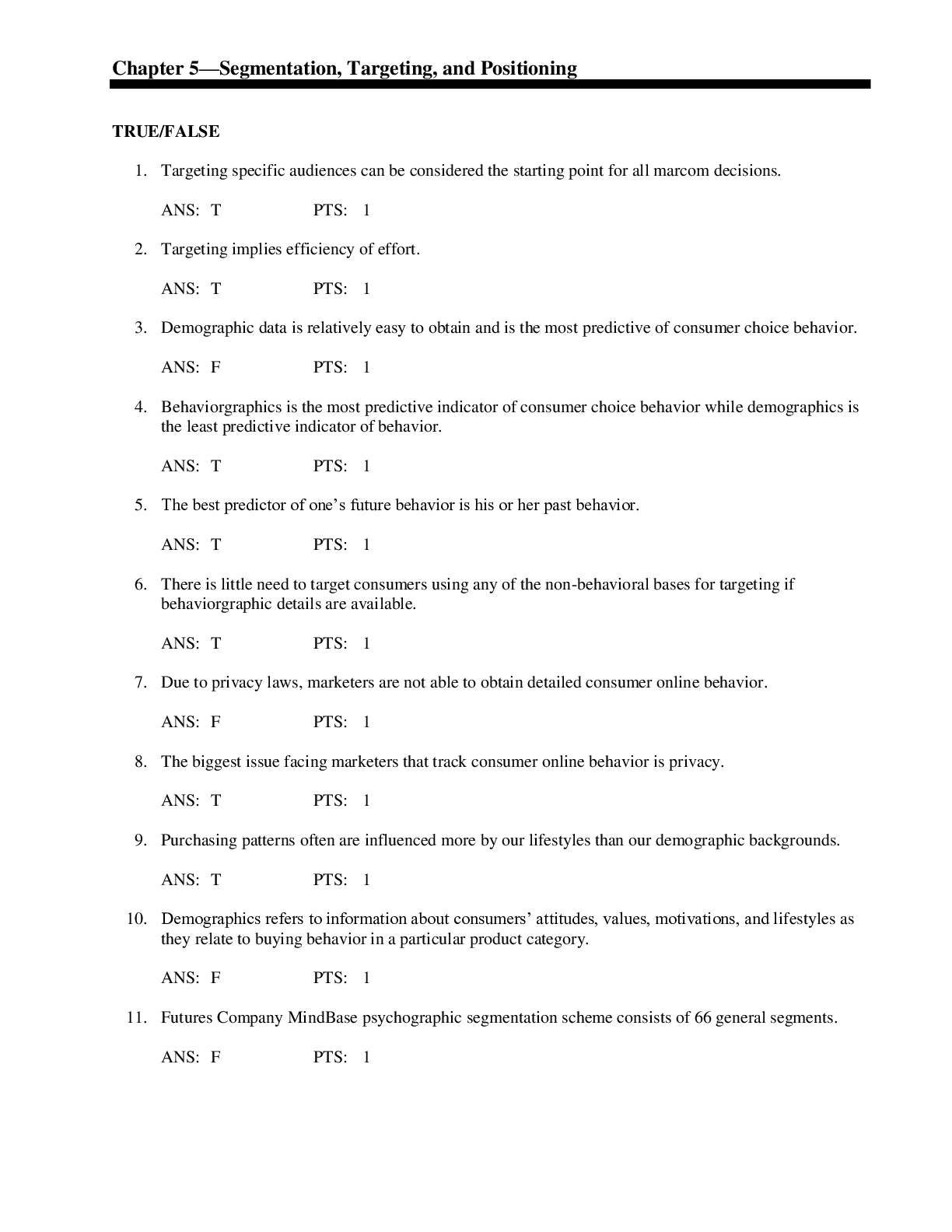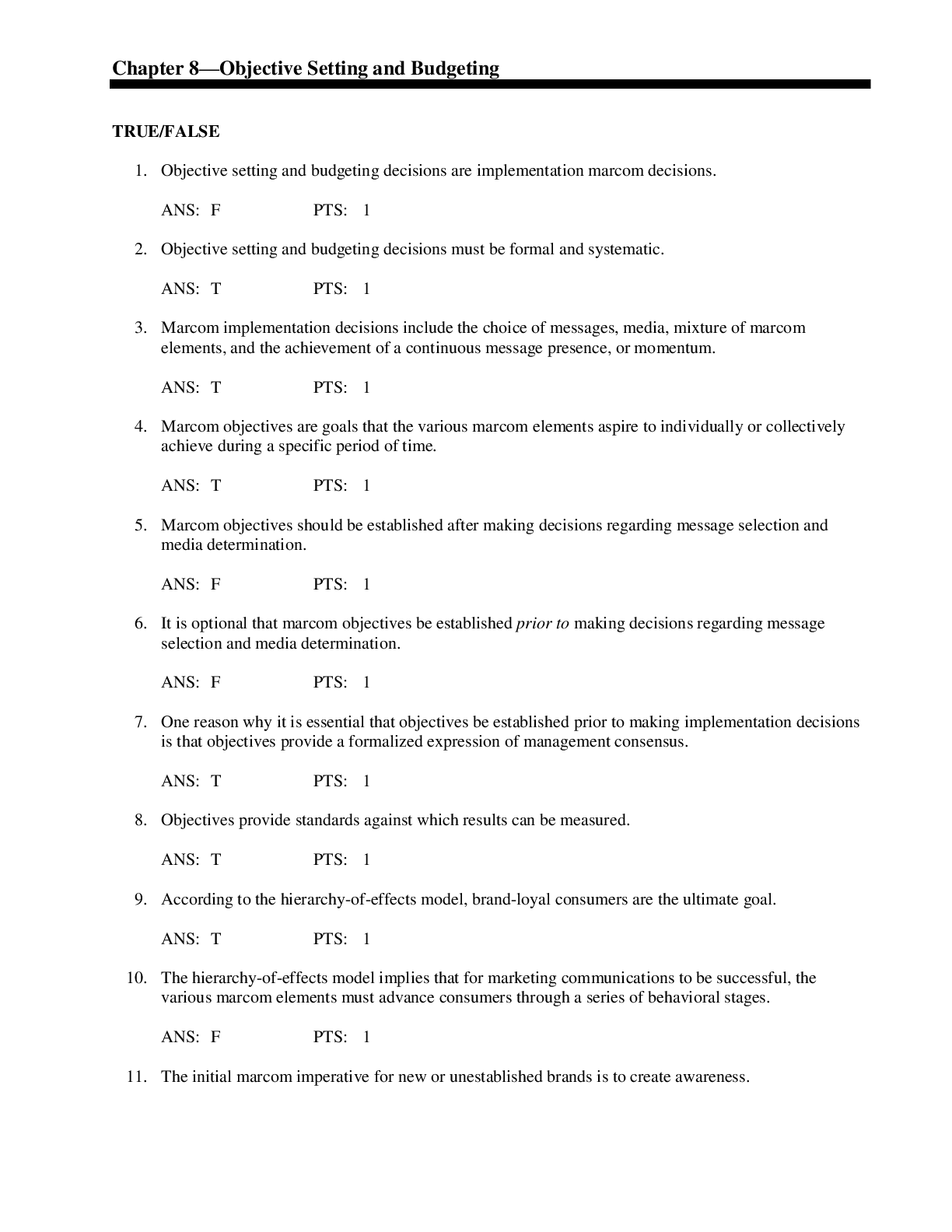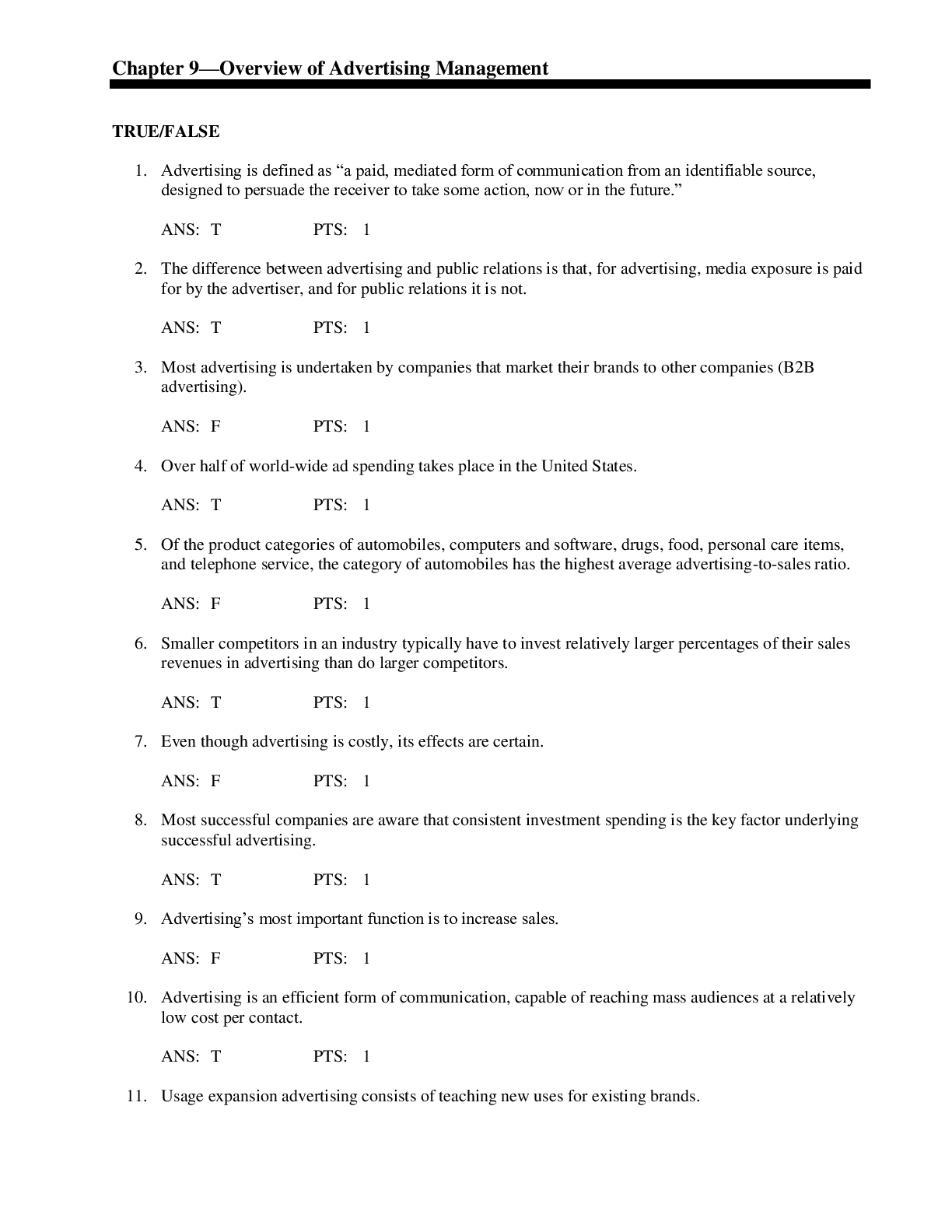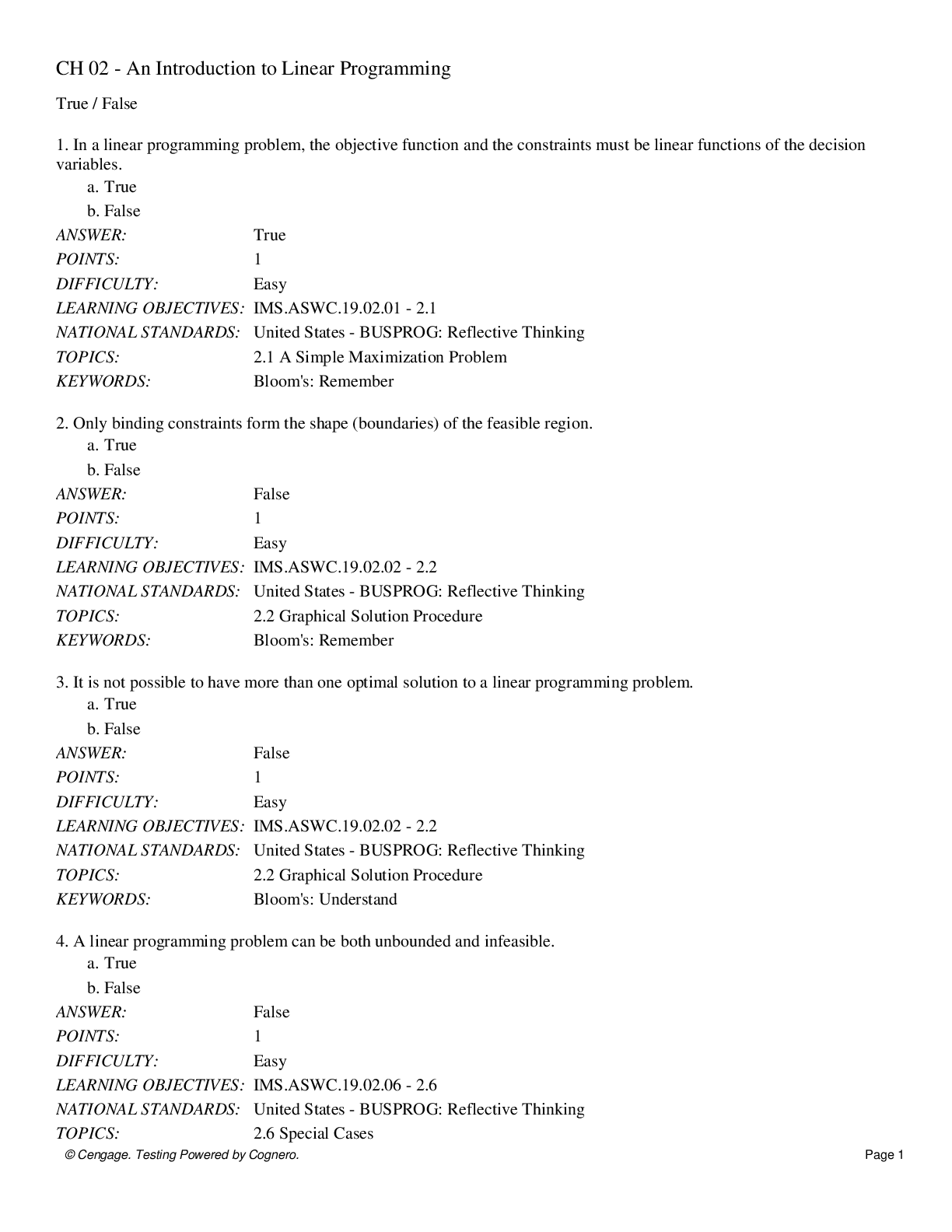*NURSING > QUESTIONS & ANSWERS > (Solved) Barrons CCRN Test 1 Questions and Answers (All)
(Solved) Barrons CCRN Test 1 Questions and Answers
Document Content and Description Below
(Solved) Barrons CCRN Test 1 Questions and Answers Which of the following clinical signs will the patient with a cerebellar abnormality most likely demonstrate? - Cerebellum is responsible for bala... nce and equillibrium Cardiogenic shock secondary to left ventricular failure will generally result in: - Widening Pule Pressure The systolic pressure decreases due to a drop in cardiac output; however, the diastolic pressure either stays the same or increases due to a compensatory increase of the systemic vascular resistance. The remaining choices are not found in cardiogenic shock. The patient was admitted with acute inferior wall STEMI; the physician advises the nurse to monitor the patient for signs of right ventricular (RV) infarction. Which of the following are signs of RV infarction? - Distended neck veins, clear lungs If the RV contractility decreases, pressure proximal to the right ventricle (which is the right atrium) increases, resulting in distended neck veins. As the right heart fails, left heart preload decreases, lung sounds clear. Which of the following is correct in relation to a shift of the oxyhemoglobin dissociation curve to the right? - May be due to hyperthermia Fever will shift the oxyhemoglobin dissociation curve to the right, more readily releasing oxygen from hemoglobin; this will decrease the SaO2. The remaining choices will shift the oxyhemoglobin dissociation curve to the left. The most common cause of acute liver failure is - Salycilate overdose Salicylate overdose results in renal failure and biliary obstruction may lead to pancreatitis or gallbladder disease. Alcohol abuse results in - Chronic renal failure Which of the following is indicative of a mixed acid-base disorder? - ph 7.33 PacO2 29 Pao2 72 Hco3 15The decrease in PaCO2 is evidence of respiratory alkalosis and the decreased HCO3 is evidence of a metabolic acidosis. The patient with severe sepsis or septic shock may present with this type of mixed acid-base disorder. The patient with a temporary transvenous pacemaker develops pacemaker malfunction. The orientee is instructed to reposition the patient to try to correct the problem. The cardiac monitor most likely demonstrates: - Pacer spikes without a QRS Failure to capture (spikes present without QRS) may be corrected by repositioning the patient to the side. The 75-year-old patient develops frequent 6 to 10 second episodes of asystole, interspersed with normal sinus rhythm that is associated with hypotension. The priority intervention is: - Transcutaneous pacing The rhythm described is sinus arrest. Because the patient is having serious signs and symptoms, the immediate treatment is transcutaneous pacing. Transvenous Pacing - a pacing electrode is advanced through a vein, often subclavian or internal jugular, into the right atrium or right ventricle. **Transvenous pacing may be done once the patient is stabilized. Not stable trancutaneous pacing [Show More]
Last updated: 1 year ago
Preview 1 out of 9 pages
Instant download

Buy this document to get the full access instantly
Instant Download Access after purchase
Add to cartInstant download
Reviews( 0 )
Document information
Connected school, study & course
About the document
Uploaded On
Aug 08, 2022
Number of pages
9
Written in
Additional information
This document has been written for:
Uploaded
Aug 08, 2022
Downloads
0
Views
89
